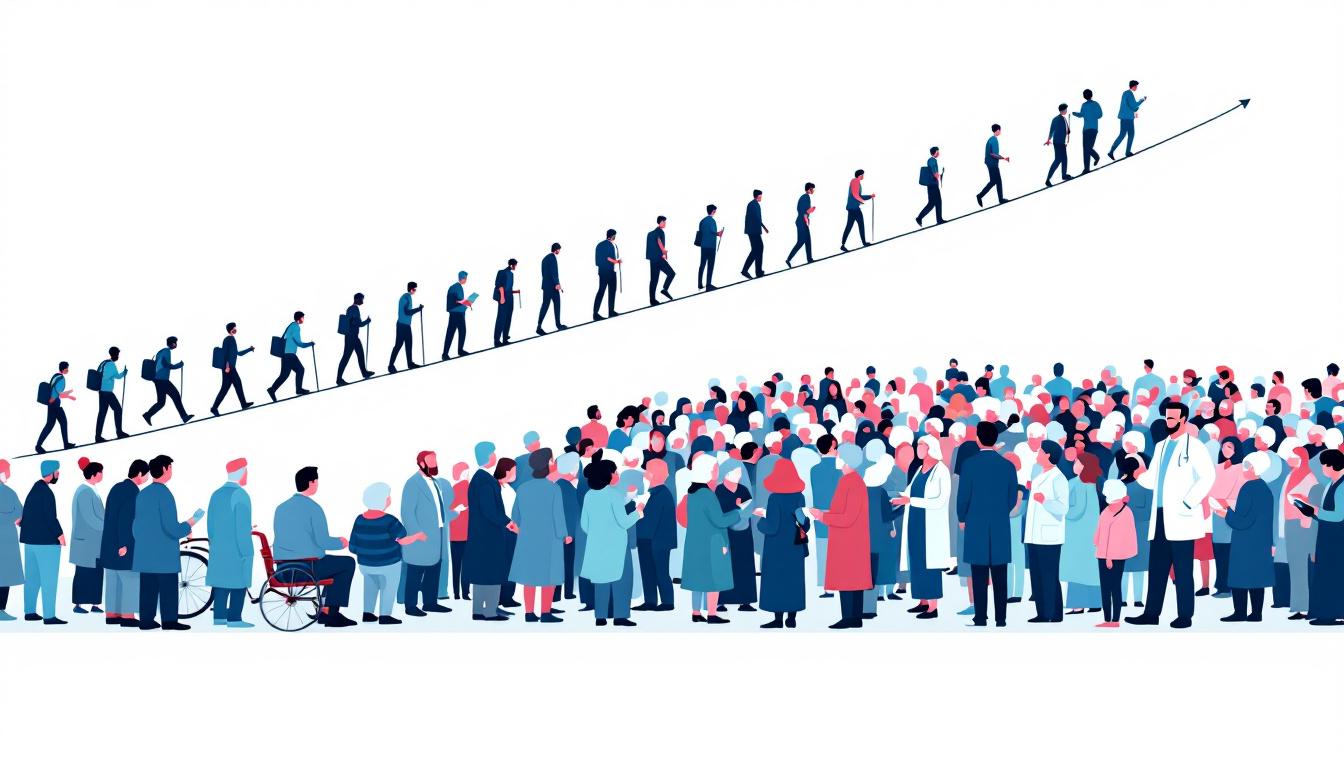Demographics once shaped civilizations quietly. Now, falling birth rates, longer life spans, and shifting social roles are combining into a turning point for countries around the world. The crisis isn’t sudden, but it is real—one that will define the daily lives of our children and grandchildren.
Demographics Changing Population Puzzle
Across the globe—from the United States to Japan, Europe, and beyond—birth rates are dropping while life expectancy is rising. In the United States, birth and death rates are now equal. Soon, deaths will outnumber new births.
By 2033, the U.S. population is expected to have more people dying each year than being born, and more people living well past 80. This is not just an American story. Developed countries from Italy to South Korea are seeing even sharper declines. The world is aging, and soon, older people will outnumber the young.
Why This Matters
Imagine a society where one in five people is over 65, and fewer kids are born each year. The result is a shrinking workforce, which means fewer people paying taxes and more people needing healthcare and support.
Economic Foundations Are Shifting
Economists often say land, labor, and capital make economies work. As the labor pool shrinks, capital and productivity come under strain. Fewer workers mean companies may struggle to fill jobs, produce goods, and support services. The pressure will also grow on national healthcare, pensions, and caregiving systems.
How Did We Get Here?
Longer Lifespans: Modern medicine and healthier living mean we live longer than any generation before. In the U.S., life expectancy is expected to climb from 78 to over 80 in the next decade.
Falling Birth Rates: In countries with high education and urbanization, families have fewer children. Women’s access to education and careers—helped by the invention of birth control in the 20th century—has played a huge role. As more women joined the workforce, two incomes became needed, making it harder to raise big families.

A New Age of Technological Breakthroughs
Every 50 years, a new technology has changed how we live:
- 1930s–1980s: The automobile allowed cities to spread and connect.
- 1980s–2020s: Microchips and computers brought global communication and digital life.
For the coming decades, medicine will be at the center. Longevity will drive demand for new treatments, health management, and innovations to keep the aging population healthy and productive. Material science, AI tools in diagnostics, and engineering of cures at the molecular level will steer this revolution.
AI will be an important helper—but not the main event. Rather, medicine, healthcare systems, and maybe even habits about aging will shape our new normal.
Economic and Social Impacts
Elderly Need, Young Shortage
Older adults keep consuming long after retirement. Their spending increasingly focuses on healthcare—doctor visits, pills, and surgeries. The stress this puts on healthcare systems will force society either to invest heavily in elder care or rethink the design altogether.
Meanwhile, fewer children mean fewer new workers, soldiers, or taxpayers. Without enough new hands, jobs may be left undone, and innovations could slow.

Policy Responses: What Governments Can Do
Countries are starting to react:
- The U.S. is considering bonuses for new births—$1,000 saved for every baby born between 2025 and 2028, plus an increased child tax credit.
- In Europe and East Asia, some countries offer robust parental leave, subsidized daycare, and housing incentives for families.
- There are proposals to raise the retirement age, scale back pensions, or even try public campaigns to encourage larger families.
But policies like these may have limited effects if cultural attitudes toward marriage, childbearing, and careers don’t shift too.
Immigration: Filling the Gaps
Another result of shrinking native-born populations is the need for immigrants, especially in sectors with hard, low-wage jobs. The children of immigrants often become educated contributors, balancing out the loss in workforce numbers. However, rapid or poorly managed migration can cause social friction or integration challenges.
Expect a growing international competition for young, skilled immigrants. The future “talent wars” may be over nurses, teachers, coders, and agricultural laborers.
The Rise of the Elder Economy
With more people living to 85, 90, and even beyond, society must adapt to the “elder economy.” Key areas of growth will include:
- Telemedicine and remote health services.
- Smart homes designed for independent elderly living.
- Pharmaceuticals that extend health and productivity.
- Second- or third-career retraining for people over 65.
- Intergenerational housing and social connection programs.
The elderly can still contribute—if given tools, jobs, and social respect.

The Future of Medicine: Not Just Longer Life, But Better Life
Medical advances may allow us to not only live longer but stay healthier and more productive in later life. Increased research is targeting age-related diseases, memory loss, and mobility issues. Robotics may help care for those who need assistance, and digital devices can make everyday life safer and easier.
The goal isn’t just to add years to life, but life to years—making older adulthood active and creative, even as society changes.
The Trap of Simple Answers
Some worry that the demographic crisis could lead to inhumane solutions, like euthanasia for the elderly. Most societies firmly reject this. A humane, creative society will find ways to balance care, productivity, and respect for all ages. Many experts point to collaboration—between generations, nations, and sectors—as the best way forward.
Lessons from the Past
History reminds us that each time we faced a giant shift—a war, a new technology, a pandemic—we adapted. Sometimes change was slow, sometimes it came with hardship. But with planning, honesty, and innovation, societies have found ways through.
What Can Ordinary People Do?
- Stay Informed: Learn about how demographic trends shape jobs, taxes, healthcare, and families in your community.
- Support Innovation: Champion policies, businesses, or groups that help both young families and the elderly thrive.
- Embrace Lifelong Learning: As careers change, retraining and new skills may be vital at any age.
- Build Bridges: Support projects bringing old and young together; reduce loneliness and encourage mutual respect.
In Summary
The coming demographic crisis isn’t a distant problem—it’s starting now. Shrinking birth rates and longer lives will change the way nations work, spend money, and plan for the future. The most successful societies will be those that prepare, adapt, and use every tool—technology, immigration, policy, and above all, human community—to meet these challenges with hope and ingenuity.
To contact us click here .

